Eduard Spitfire Mk.Ia, 1/48. A Pair of Kiwis over Dunkirk.
'the airspeed indicator read 240 mph, and I thought "this is bloody marvellous!", but then the Spitfire began to shudder and seemed as if it was going to stall. - I realised what had happened, my pitot head had been shot away, and the needle dropped to 240mph on the dial under gravity' - Pilot Officer Colin F. Gray on his first encounter with the enemy.
For the first time I'm able to say click the link to see the W.I.P of this model: https://imodeler.com/groups/work-in-progress-aircraft/forum/topic/eduard-spitfire-mk-ia-1-48-a-pair-of-kiwis/
Few aircraft are as iconic as the Spitfire, and with Eduard's new tooling of the Spitfire Mk.I coming out last year I felt it was time to build something I've been wanting to do for a while; a pair of Dunkirk era Spitfires in formation with a matching squadron code.
History
In order to assist the struggling RAF squadrons in France, from May 16 1940 No. 54 Squadron began providing air cover to allied positions. With Operation Dynamo beginning in May 26th the RAF efforts became focused on covering the evacuation and 54 Squadron would begin flying several sorties each day to assist. During the Battle of France two pilots from 54 Squadron would begin to add to their victory count, both of which would later go on to be the highest scoring aces from New Zealand. Alan Deere would be credited with 6 kills in the span of a week, starting with his first on the 23rd of May, but on the 28th he would be shot down himself whilst flying Spitfire Mk.I N3180 (modeled here) and forced to crash land on a beach in Belgium. He was reportedly dragged unconscious from the plane by a soldier, and after coming back to consciousness he would hitch a ride aboard an Army Lorry to get to Dunkirk and would return to England a mere 19 hours after he left.
During this time another pilot, Colin Falkland Gray, would also gain his first (half) kill to his tally. After escorting Swordfish bombers on May 25th, Gray's flight came into contact with a German flight of Bf-109s. A dogfight started in which he open fire on one of them, he observed the German which was bailing out after being shot at by another Spitfire, but in his error he spent too much time watching the 109 go down and was jumped by another German. Colin's aircraft was knocked into a spiralling dive but he managed to pull out into a climb before leveling off to check for damage. His left aileron had a hole in it, and this round also knocked out his pitot tube, he also lost hydraulic pressure required for normal gear operation. He would nurse the aircraft back home and would use the emergency CO2 to blow down the wheels, and came in for a very fast and difficult landing due to the lack of airspeed indicator. The aircraft, N3173 (modeled here) would be shown to Vickers to see how much the plane suffered, but was eventually repaired. As far as I can tell this plane would be shot down later in the Battle of Britain flown by 152 squadron.
Both pilots would survive the war, Alan Deere would be credited with 22 kills whilst Colin Gray would be credited with 27.5 kills, making them the second and first highest scoring aces from New Zealand respectively. Both pilots would die in 1995, just a month apart.
The Kit
With the history part out of the way, let's talk about the kit. This was from Eduard's 'Spitfire Story, The Few' which came out last year, which means this is the only time I've built a kit within a year of release. The kit comes with two Spitfire sprues, but do note (as I didn't realise) that this is one early, and late, t's not two Spitfire Mk.Is that you can choose. This effectively means that out of the 12 decal choices, one has to use 1 of 4 and the other will have to use 1 of 8. Also, interestingly, you can downgrade Eduard's late Spitfire Mk.I with included parts to make a Pre-war Spit, so why they didn't just include two late sprues is beyond me. In the end I modified the kit to get it how I wanted it to be as two later style Mk.Is.
For decals I used Eduard's included ones, these went on really well and I even removed the carrier film from the roundels on the wings. Originally Eduard said they didn't recommend removing the carrier films on their new decals as it was an unintended side effect of a new formula, but recently they've officially embraced the idea and are going to make a tutorial on how to do it. The results are admittedly much better when the film is removed.
For KL-N I couldn't find any decals out there, so I used extra decals within the set (hence the different size fuselage roundel, but then again KL-B has a weirdly small one anyway) and made the KL-N with homemade masks which actually came out surprisingly well. I also went about modifying the kit to have a spinning propeller, it doesn't quite spin but it does move which is quite nice and is definitely better than Eduard's trend of gluing the thing in solid, I will always advocate for propellers that can move. The kit also got some wheels up treatment which was accomplished by sanding down some of the gear leg and cutting the wheel itself in half, but all in all it was one of the most simple modifications to being wheels up I've had on a kit.
Painting was done almost completely with Tamiya paints mixed up into some 'accurate' colours I found on some forum thread a few months back, I can't tell you for certain if they are accurate but they sure look right to me. On my previous build I had tried something a bit different with painting and did it again here, the fading used worked really well and is probably the highlight of my build. If you compare this to my second airbrushed model which is Airfix's Spitfire you can see a huge difference in the quality of painting.
Once again, if you want to see more, including the parts that aren't visible anymore such as the fully photoetch cockpit and aftermarket resin pilots, I'd recommend clicking that link and seeing the W.I.P thread.
In Conclusion
Eduard, once again, have released an amazing kit, and once again have had some head-scratching decisions that let it down from being a perfect kit. Apparently the cockpit poorly fits when closed (I can't comment on this as I'm sure the aftermarket pilots didn't help), the lack of a moving propeller annoys me, the rivets on the fuselage just like on their Tempest are ridiculously out of scale on an otherwise extremely accurate kit, and some design choices such as the fit of the 'chin', door batch, and the ailerons are questionable.
Perhaps one of the reasons I can list off the issues with this kit so easily is because its so close to being perfect, and in an otherwise amazing build these relatively minor issues stand out as there were no real major issues. Some filling was required but not much compared to normal. Overall I throughly recommend this kit for anyone interested in building a Spitfire, I for one will be buying their Mk.V set to release later this year so I can have an excuse to use unused resin Douglas Bader included in this kit, though I'd likely sand off the weird tank rivets on the fuselage of the kit. It's certainly lightyears ahead of the Airfix kit that came out not that long ago, and that isn't even a bad kit itself.
Just remember, if you aren't building an Eduard model with the cockpit open, wheels down, propeller glued in, and some panels open, you're not building it how they intend you to. I have no illusions that if I just did what they say in the instructions I'd have an easier time with their kits, but I'm difficult and like a plane on a stick at the end of the day. I have a bit of a love/hate relationship with Eduard's products, but every one I've built has produced an amazing model in the shelf that stands out amongst the rest.
Edit: And, coincidentally, it is ANZAC day when I posted this if you are from Kiwi or Kangaroo land, and ANZAC day today if you're from Tea land like me. Regardless, it always amazes me just how many ANZAC men put their lives on the line to protect people on the complete other side of the world. These two pilots were skilled but also got very lucky and where able to return their families after the war, but an utmost respect is given to those who flew these and didn't make it back home.
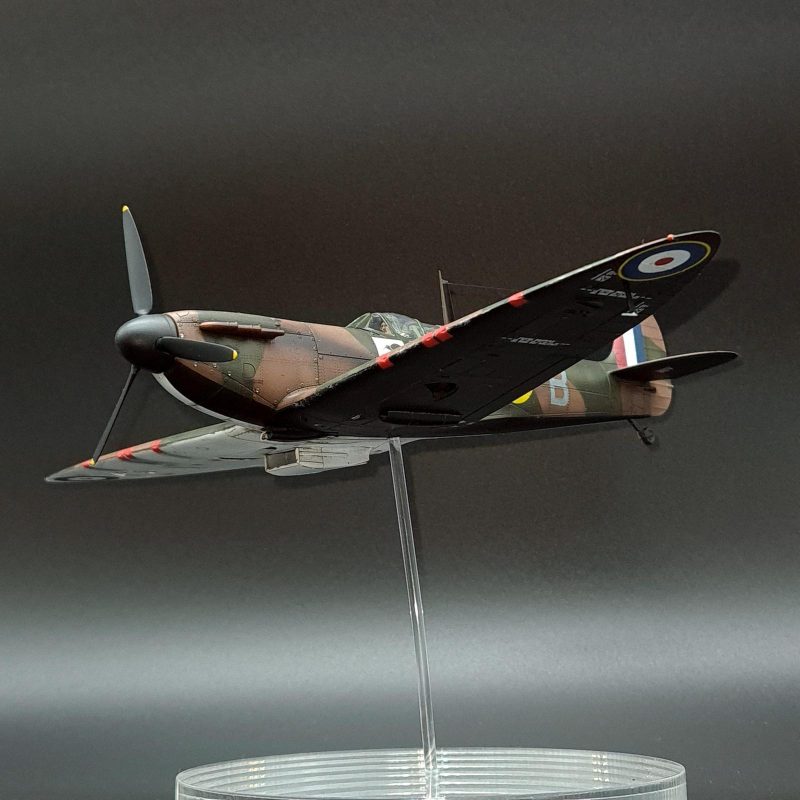
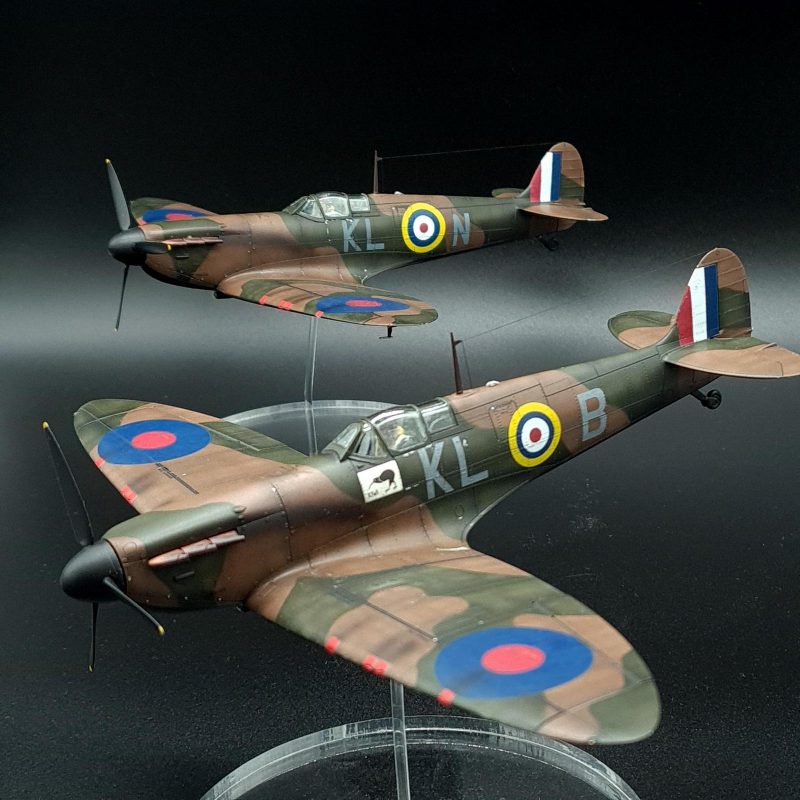
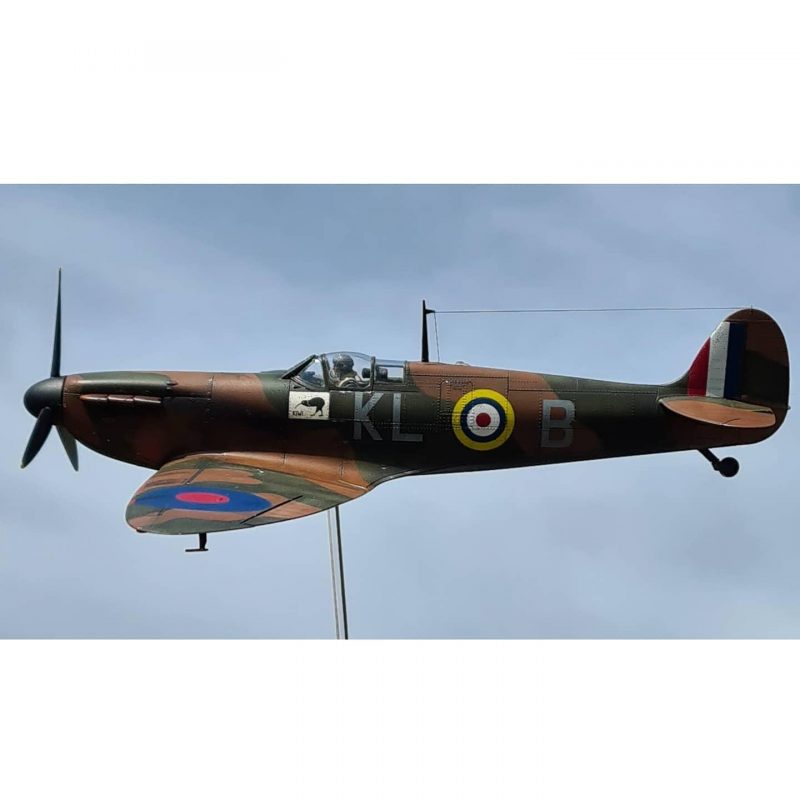
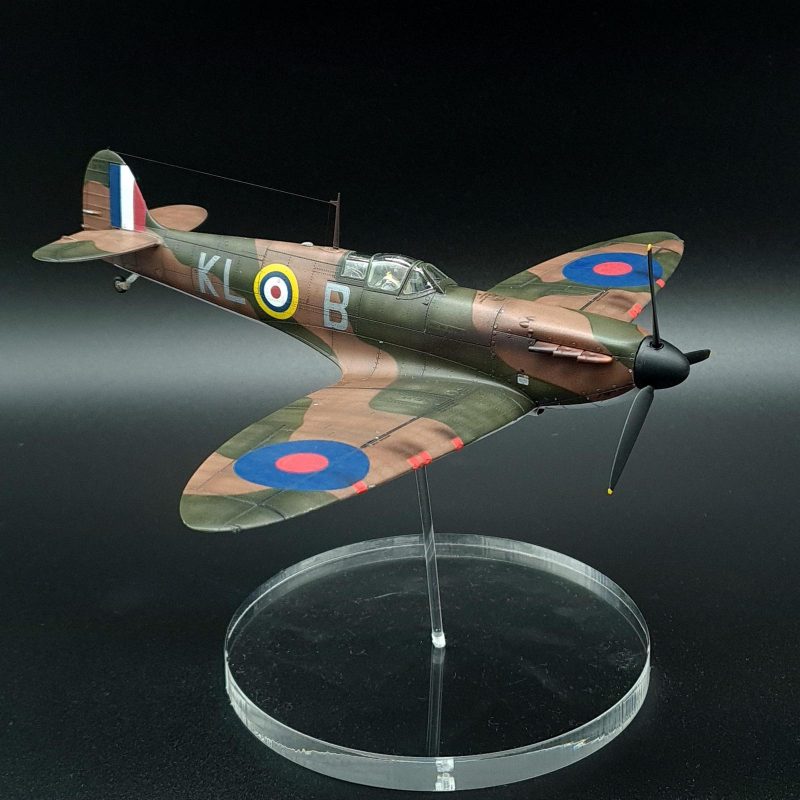
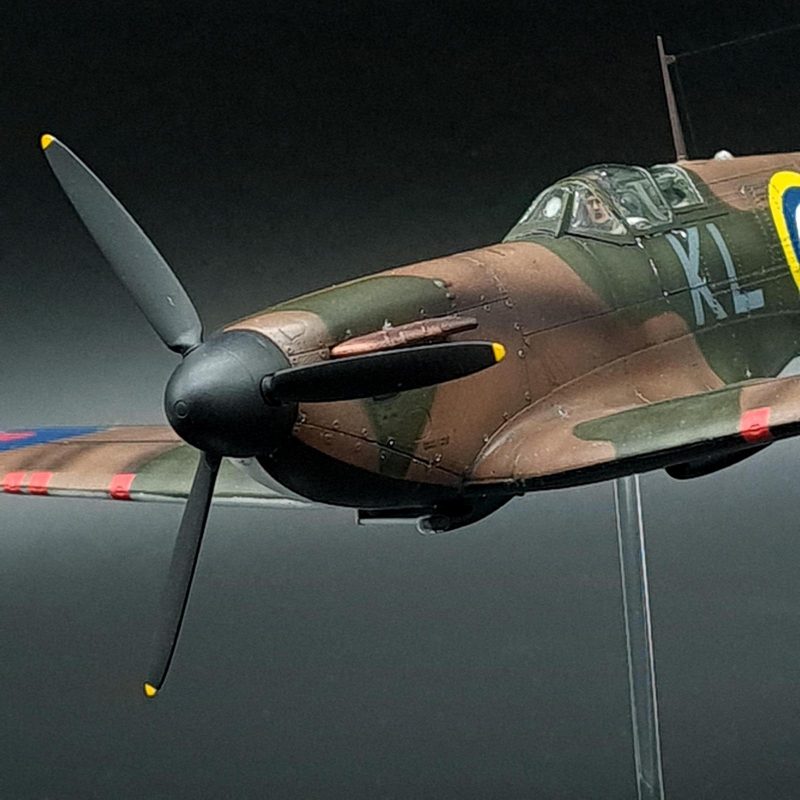
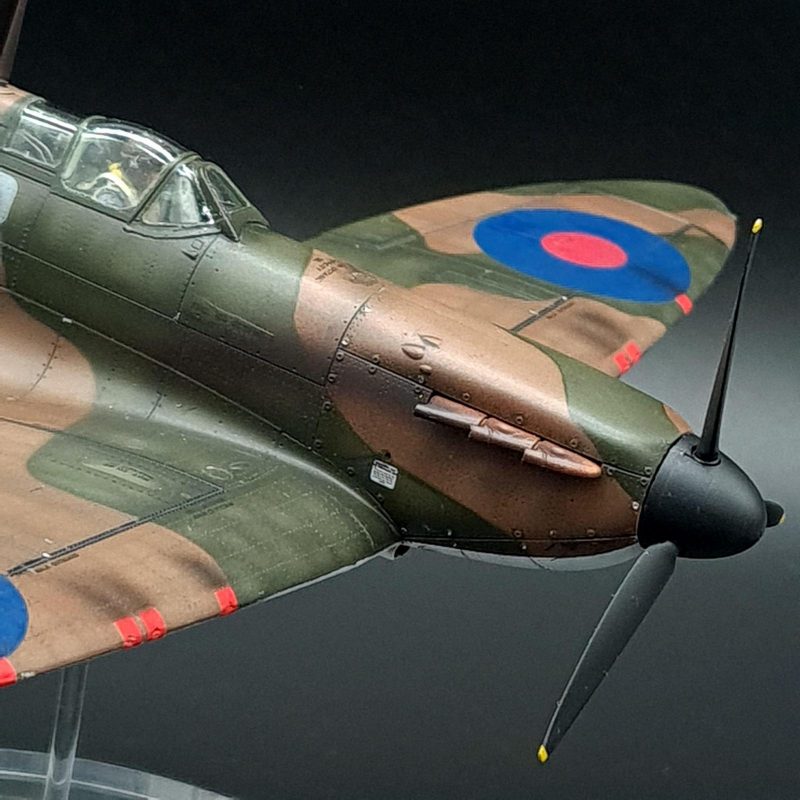
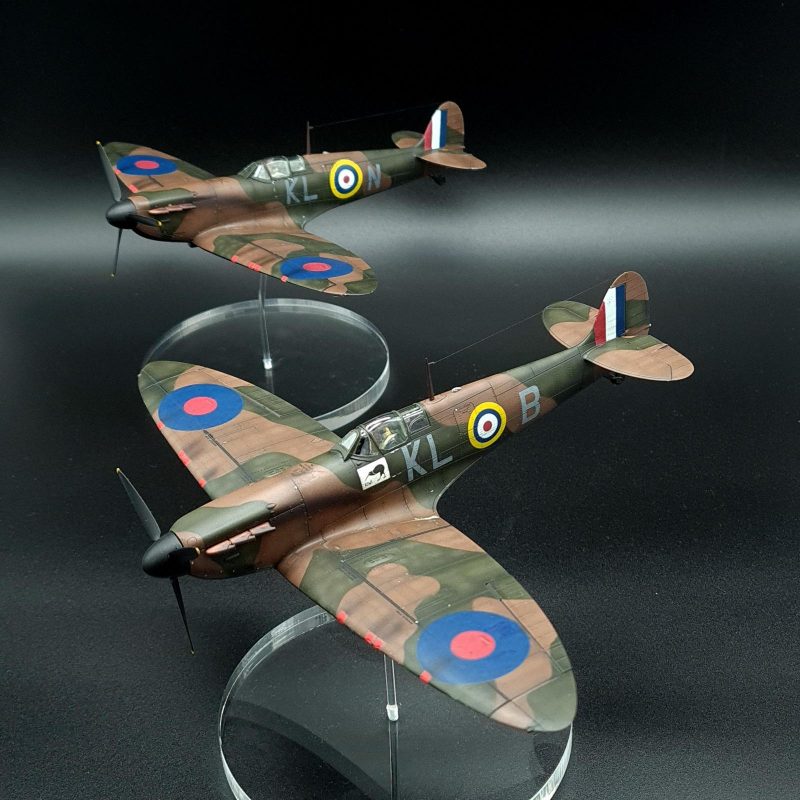
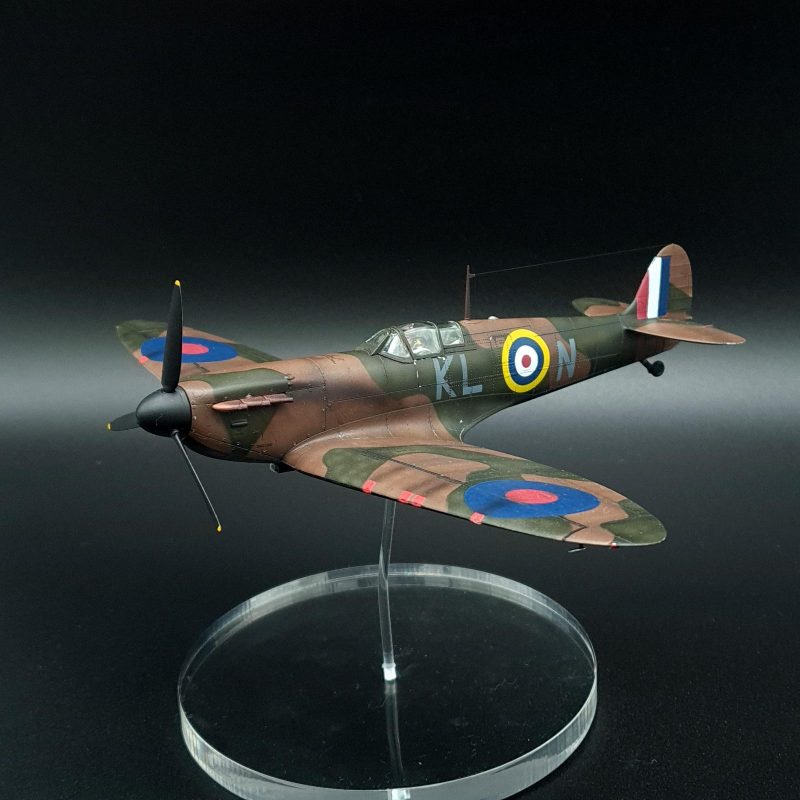
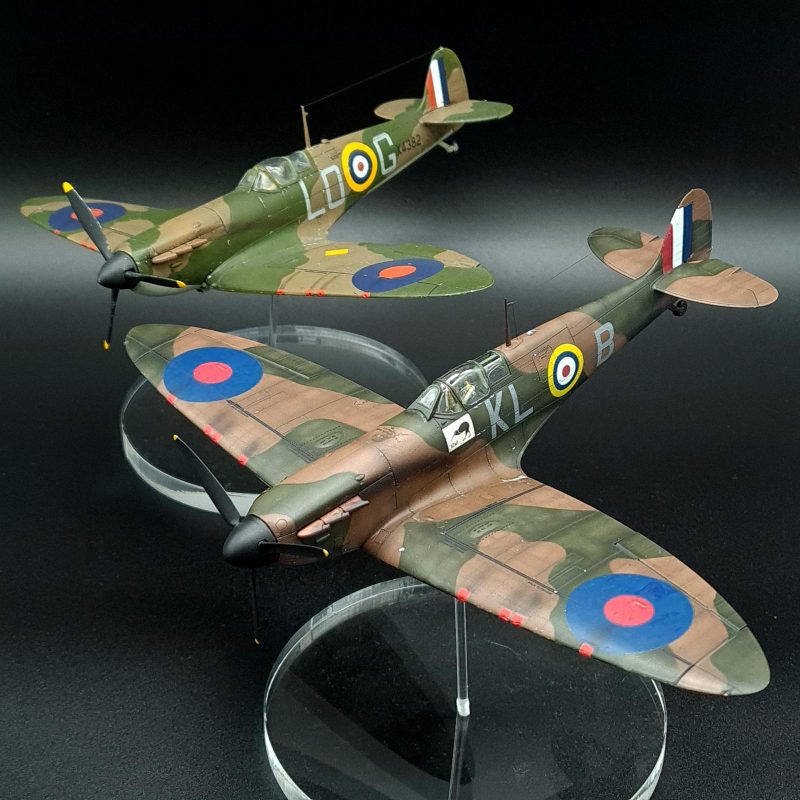
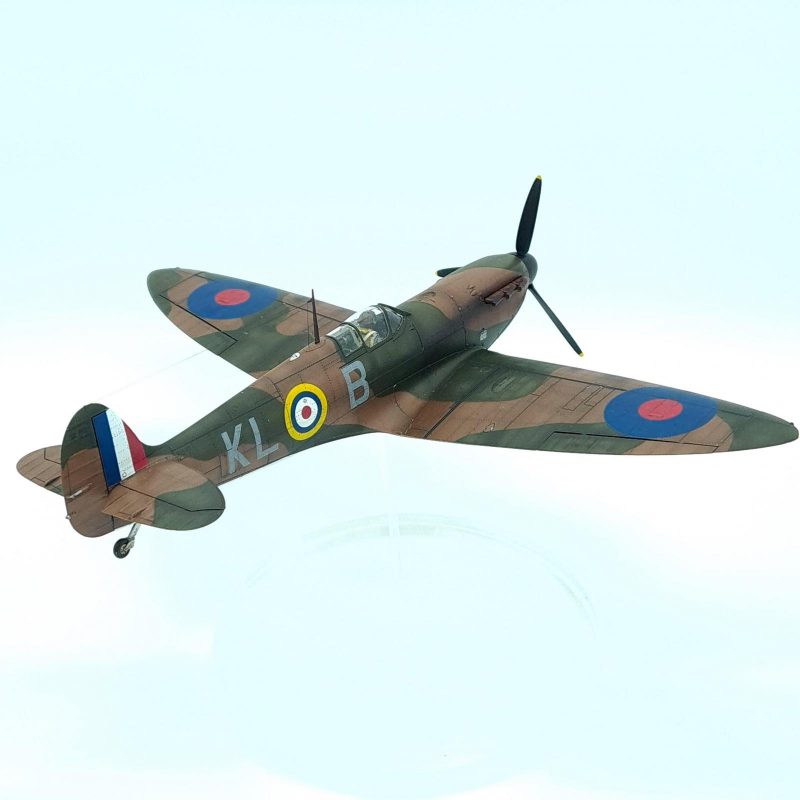
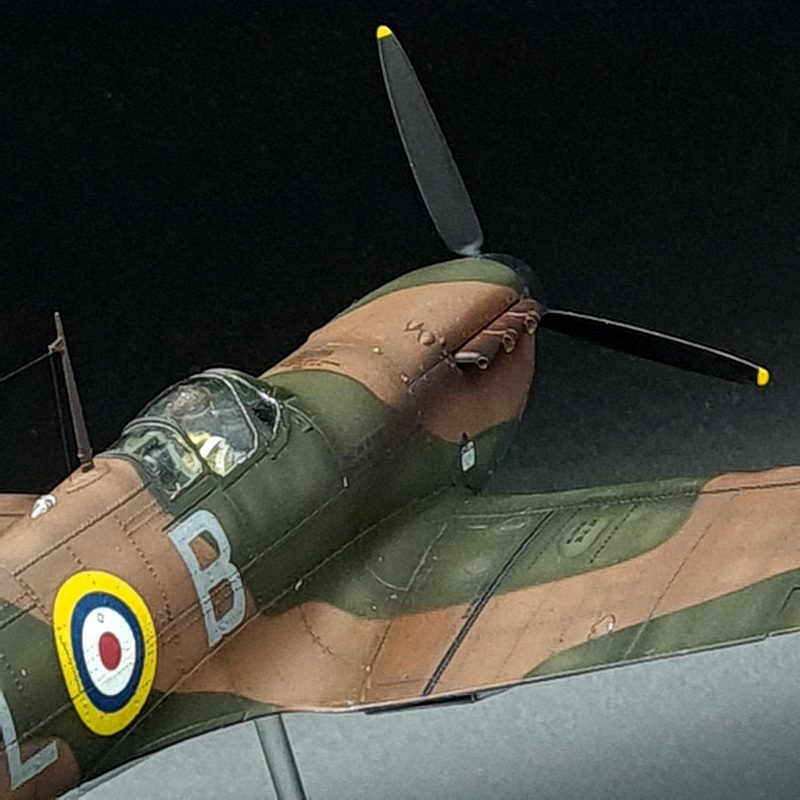
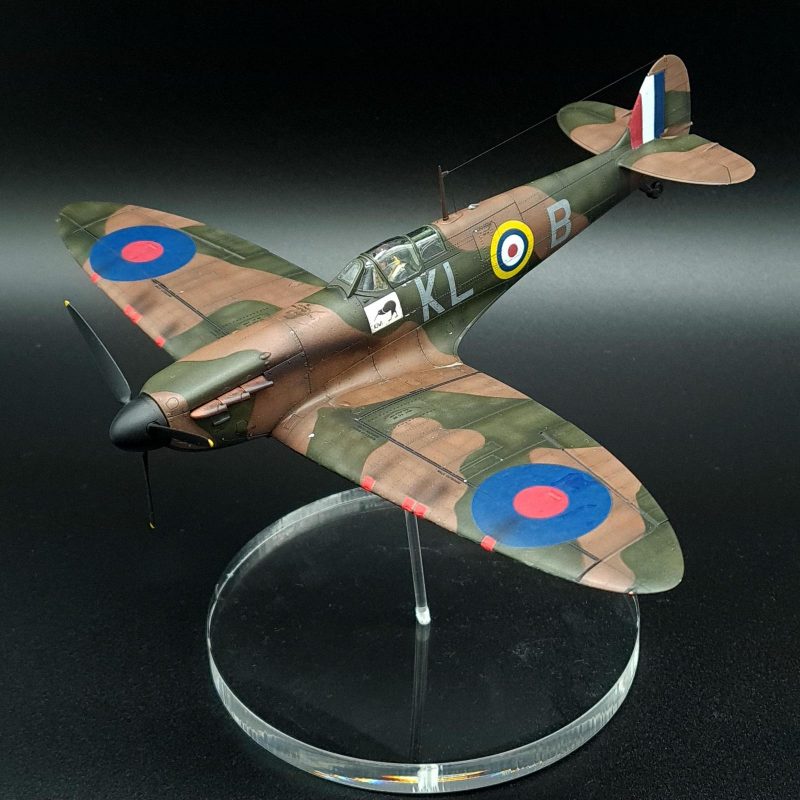
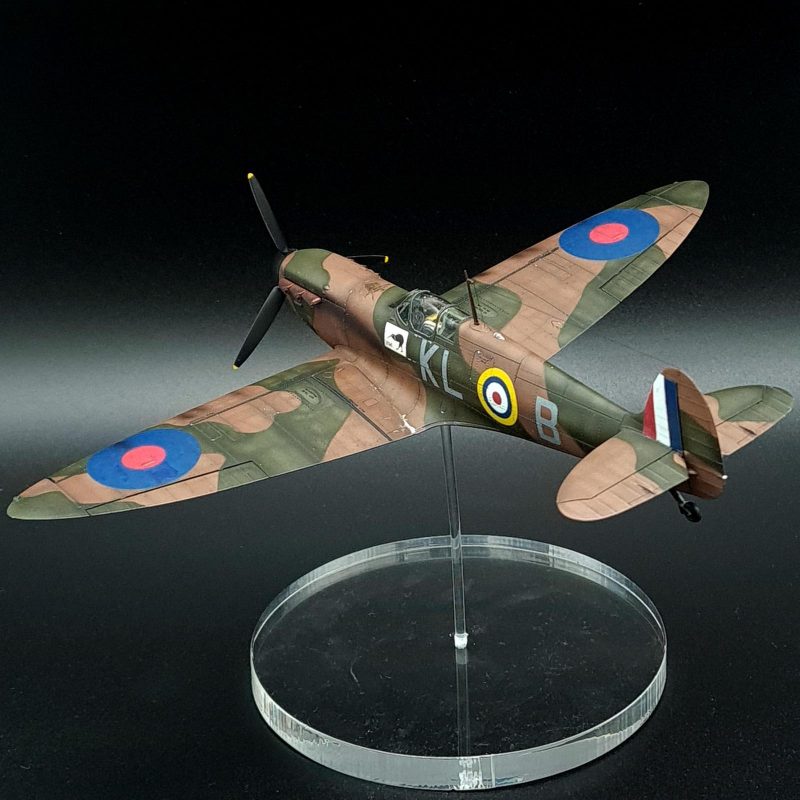

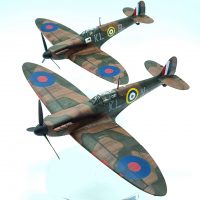
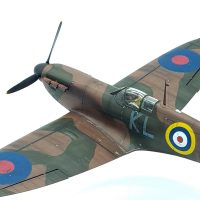


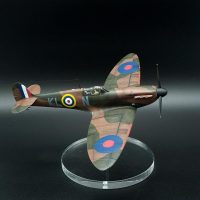
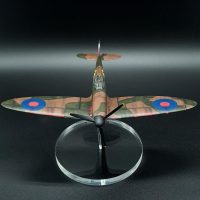
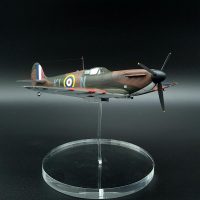

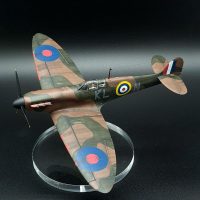
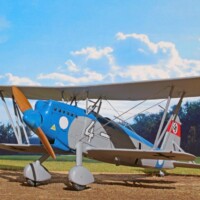
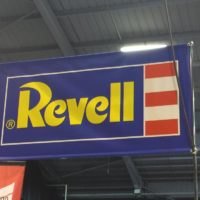
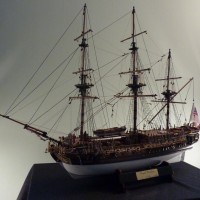
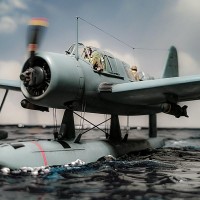
First word that comes to my mind is, WOW.
You did a fantastic job on these Spit's, Harvey.
The paintwork, weathering, stains, is very realistic.
It was a pleasure to follow your building progress and I have definitely learned from your techniques.
Well done.
Thank you kindly! Definitely very happy if you were able to learn something from this build!
Those are two really beautiful spitfires, Harvey @scalerambush!
Extremely skillfully done, down to every detail, as I had the utmost pleasure to follow in your WiP. Painting is super (including your home made masks result) and weathering is just "right". Thanks for the decals info, would be useful to know that removing the film yields better results, as it looks like Eduard will soon announce.
It was also interesting to see the little mods needed to finish them wheels-up.
Your (first) headlines article was equally amazing: loved reading the historical part, as well as the construction notes and conclusions.
Keep them coming!
Thank you very much and thank you for the support during the W.I.P! Glad you enjoyed watching along with the build.
Lovely work Harvey, and a nice touch on ANZAC day!
Very convenient timing! Thank you
Looks like a seen out of the film, beautifully done!
Thank you!
A beautiful brace of Spits! The paint work is excellent. I can commiserate with the issues of forcing modern kits into "wheels-up" mode, as most manufacturers seem to feel the only way to present a kit is with all the gear and panels open. My preference is to build them in their intended role - as a bird of prey in the air!
Absolutely agreed, thank you!